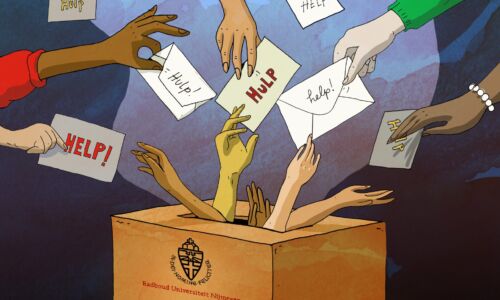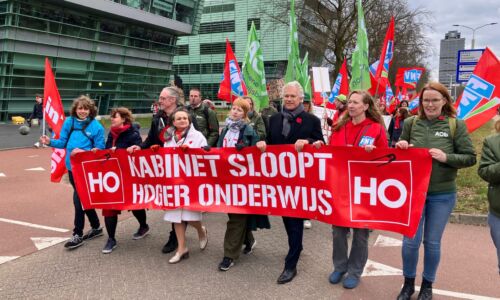Coinciding orientations of university and college lead to crowds and resentment
-
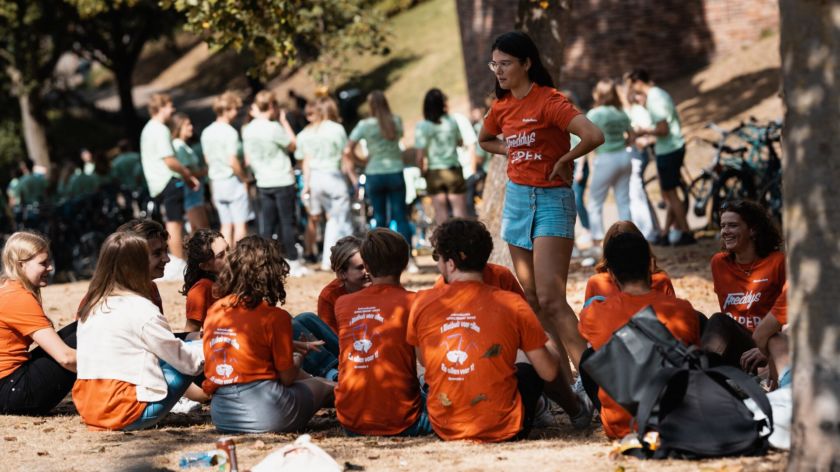 Drukte in de stad. Foto: Johannes Fiebig
Drukte in de stad. Foto: Johannes Fiebig
Because the orientation weeks of Radboud University and the HAN University of Applied Sciences coincide, there are more introduction groups in the city centre than ever before. This leads to bicycle parking being filled to the brim and long queues at cafes and clubs. Associations had to put in extra effort this year to find a fitting party location. ‘We make a bad impression on new students.’
In September 2021, student association Carolus Magnus was told by Radboud University that the orientation weeks of Radboud University and the HAN University of Applied Sciences would coincide this year. ‘We immediately said that we didn’t think it was a good idea’, says president Guus Kierkels. ‘Too much pressure is being put on the city and the associations this way. Students of both the university and the HAN visit our association. This leads to long queues.’
Kierkels also thinks there is a second reason why the city centre might be busy at night. The multi-day orientation festival of Radboud University in the German town of Koch has been replaced by four one-day festival days – from Wednesday till Saturday – in the Vasim, which end at 11 pm. ‘A lot of freshmen might go to the city centre afterwards to keep partying. We expect large crowds.’
Bowling alley
Radboud University and the HAN decide themselves when their orientation week takes place, Vox learned after questioning both educational institutions. The introduction of the HAN always takes place in the last week of August, that of Radboud University two weeks before the start of the academic year.
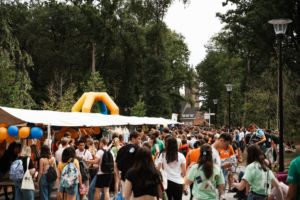
Spokespersons of both institutions see advantages as well as disadvantages of coinciding orientation weeks. They point out that students at the university and the HAN can meet each other this week, but also acknowledge that a bowling alley, cafes, or other facilities might be fully booked quicker – which is a pain for associations.
Molenstraat is full
That is what members of the orientation committee at psychology experienced when searching for fitting party locations. ‘There is a limited amount of locations in Nijmegen where you can have really big parties, for example in the large cafes at the Molenstraat’, says Sharon Vlot. ‘Since around 600 freshmen attend their orientation with us, we prefer to have our parties there.’
‘There is a limited amount of locations in Nijmegen where you can have really big parties’
Because of the coinciding orientation weeks of the university and the HAN, that is now not possible this year. ‘Café owners at the Molenstraat worked out beforehand which associations needed a location, and then made a schedule’, says Vlot. ‘Because of that, our traditional party in De Drie Gezusters has been moved to Sjors & Sjimmie at the Koningsplein. And the SPiN party in the Molenstraat has been moved to De Professor. In the end it all worked out, but it was a lot more hassle than previous years.’
‘Messy impression’
Entrepreneur Khalid Oubaha, who owns the cafes De Drie Gezusters, Café van Buren and Sjors & Sjimmie in Nijmegen, among other things, is not happy about the coinciding orientation weeks. ‘Nijmegen leaves a bad impression on new students this week. There are long queues at cafes and restaurants, there are parked bicycles everywhere, it gives a messy impression, and you can’t control the crowds.’
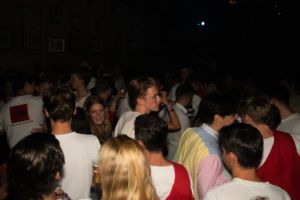
Oubaha had to disappoint quite a number of associations who where looking for a party location and thus missed out on some revenue. He hopes the orientation weeks of the university and the HAN will take place in two consecutive weeks in the future. ‘Then there will be fewer blockades and you can present the city better. Hopefully we will be listened to as well when it comes to that, because the hospitality industry plays a big role during the orientation weeks.’
Future
Kierkels, Vlot and Oubaha all hope that the orientation weeks of the university and the HAN will no longer coincide in the future. Whether this will be the case, spokespersons of the university and HAN could not confirm at this time.
Translated by Jan Scholten
